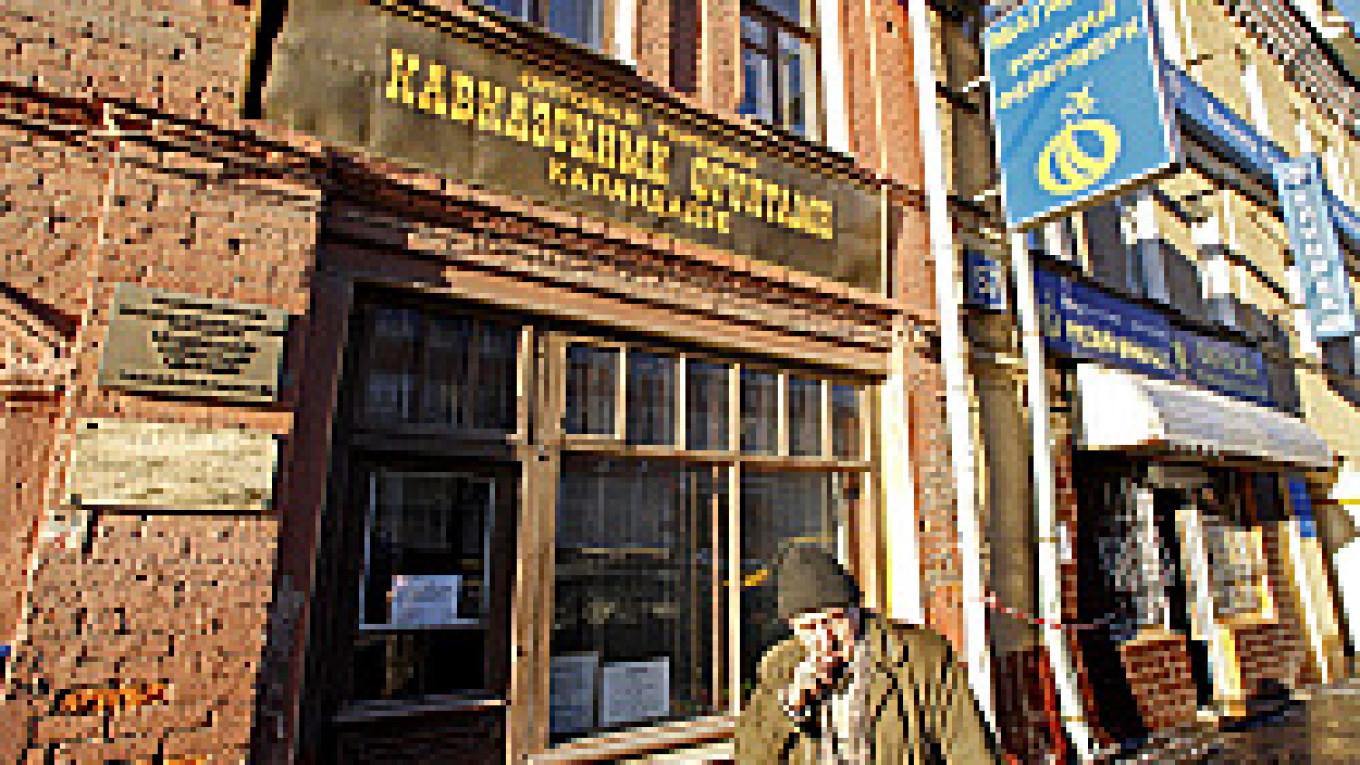The Museum of the Underground Printing House 1905-06, a filial of the Museum of Contemporary History, gives visitors a glimpse of the conspiratorial atmosphere of tsarist times when the socialist opposition rallied for reform using the written word to call for strikes and argue for human rights, free press and revolution.
The fruit store was owned by a Georgian family who successfully hid an American printing press in its basement. The press produced leaflets and the newspaper of the Central Committee of the Russian Social-Democratic Labor Party in 1905 and 1906, when the country faced a wave of social unrest that eventually led to the creation of the State Duma.
The tsarist regime, as Richard Pipes wrote in "Russia Under the Old Regime," controlled all published material. "No literature could be published in Russia or enter it from abroad without the censor's permission," he wrote.
The shop was one of the many underground ways created to bypass that censorship. It was especially audacious as the press was printing conspiratorial material against the tsar under the police's nose, said a museum worker who refused to give her name in the spirit of the conspiracy that went on in the shop. A police station was located nearby.
The fruit business belonged to one C. Kobidze -- his first name is not given for presumably conspiratorial reasons -- ? who brought his wife and a 6- month-old child as cover for his work.
The revolutionaries were risking their lives with the printing press. In 1906 and 1907 alone, hundred of publications were shut down and more than 1,000 people were sentenced to death.
The museum is a small four-room flat furnished in an early 20th-century Russian style with Georgian influences.
Going downstairs you can see a basement which looks like a storage room for boxes with fruits and cheese but which actually hides the entrance to the printing press, simply a large hole dug in the earth. The museum has made the hole larger so that visitors can see inside; the original was so small that no one could spend more than an hour working inside. Visitors would come to pretend to buy fruit and leave with pamphlets of dissension to distribute.
Museum of the Underground Printing House 1905-06. 55 Lesnaya Ulitsa. Metro Belorusskaya. Tel 250-30-74. www.museum.ru/M386
A Message from The Moscow Times:
Dear readers,
We are facing unprecedented challenges. Russia's Prosecutor General's Office has designated The Moscow Times as an "undesirable" organization, criminalizing our work and putting our staff at risk of prosecution. This follows our earlier unjust labeling as a "foreign agent."
These actions are direct attempts to silence independent journalism in Russia. The authorities claim our work "discredits the decisions of the Russian leadership." We see things differently: we strive to provide accurate, unbiased reporting on Russia.
We, the journalists of The Moscow Times, refuse to be silenced. But to continue our work, we need your help.
Your support, no matter how small, makes a world of difference. If you can, please support us monthly starting from just $2. It's quick to set up, and every contribution makes a significant impact.
By supporting The Moscow Times, you're defending open, independent journalism in the face of repression. Thank you for standing with us.
Remind me later.


